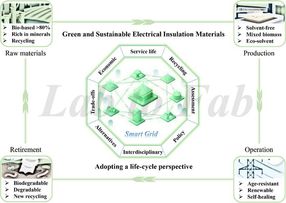Small but Mighty: Miniaturized Hydrogen Production
“We asked the biologically somewhat crazy question of whether we can’t just find a shortcut and let ferredoxin produce hydrogen”
Advertisement
Researchers have created a miniature biocatalyst for hydrogen production. It works efficiently with electrons from photosynthesis.
Natural hydrogen-producing enzymes are large and extremely sensitive to oxygen. This makes it difficult to use them for the applied production of green hydrogen. Researchers from the Photobiotechnology group at Ruhr University Bochum and partners at the University of Potsdam, Germany, have found a way to bypass this problem: They transferred the iron-containing catalytic center of one such enzyme – [FeFe]-hydrogenase – into a ferredoxin. This small biomolecule acts as an electron carrier in all living organisms. The artificial biohybrid can efficiently produce hydrogen using electrons from light-powered biological systems. The researchers published their findings in the journal Advanced Science on Juni 17, 2025.
Shortcut to hydrogen production
Hydrogen is considered a clean energy carrier of the future, but it remains difficult to produce it sustainably. Natural enzymes known as hydrogenases are highly efficient, hydrogen-producing biocatalysts, but they are not yet being used industrially. With 600 amino acids, they are very large and complex, and often extremely sensitive to oxygen. They also require highly energetic electrons that should also be sustainably produced.
[FeFe]-hydrogenases use an iron-containing molecule to produce hydrogen. This cofactor functions similarly to a platinum catalyst and can be chemically synthesized. However, as an isolated molecule it is inert and requires the protein environment to achieve maximum effectiveness.
Simplifying the biocatalyst
The researchers from Ruhr University Bochum wanted to simplify the highly complex hydrogenase biocatalyst to facilitate its integration into industrial processes. In some microalgae, hydrogenases are supplied with electrons provided by photosynthesis. The small protein ferredoxin, which also contains iron, transfers the electrons. Ferredoxin itself receives the electrons directly from the photosynthetic electron transport chain.
“We asked the biologically somewhat crazy question of whether we can’t just find a shortcut and let ferredoxin produce hydrogen,” explains Vera Engelbrecht, one of the two lead authors of the study. To her great surprise, the researchers were able to identify ferredoxins that could produce hydrogen in combination with the hydrogenase cofactor. “However, we had to circumvent the biological synthesis pathways,” explains Yiting She, the other lead author. “Only specific ferredoxins could collaborate with the cofactor. It was a difficult but exciting journey to discover this.”
Successful interaction between protein and catalyst
The biohybrid’s high activity surprised the researchers. “We know that the interaction between protein and cofactor in natural [FeFe]-hydrogenases is finely tuned,” explains Professor Thomas Happe, who supervised the project. In cooperation with partners from the University of Potsdam, the new ferredoxin hydrogenase was therefore characterized spectroscopically and with quantum-mechanical calculations. “It seems that the ferredoxin protein provides a chemically favorable environment for the hydrogenase catalyst,” concludes Happe. In order to achieve this, the natural cofactor of the ferredoxin must be replaced with the hydrogenase cofactor via complex synthesis pathways. “Despite of this, the new protein can still receive electrons from photosynthesis components,” says Yiting She. This is thus an important feasibility study for a small, artificial metalloenzyme that imitates natural, light-powered hydrogenases but with fewer components and smaller scaffolds.


























































